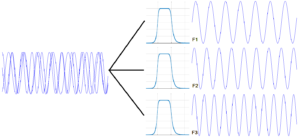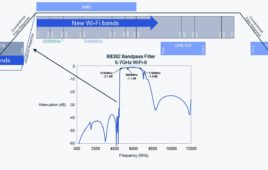In a video interview with 5G Technology World, Resonant’s Mike Eddy explains how RF filters keep wanted signals in an interference out. It’s all in the physics.
As bandwidth gets crowded, governments auction more spectrum to accommodate our insatiable demand for data. While 3G used frequencies around 1 GHz, 4G expanded to around 2 GHz. 5G devices, however, operate at frequencies from 600 MHz to 900 MHz, from 3 GHz to 6 GHz, and mmWave frequencies starting at 24 GHz. Each frequency band in use today needs a filter to keep wanted RF energy in band while keeping unwanted RF energy out.
Given the size and power constraints of today’s 5G devices, using filters made from discrete components is out of the questions. Filters must be small, not only in terms of PCB footprint but in term of thickness. With so many frequency bands in use — and more coming, cell phones needs many filters. In the video, Mike Eddy, VP of Corporate Business Development and Marketing at Resonant explains that 5G phones can have over 100 filters to accommodate cannular frequencies. Why so many? Because we expect are phones to work anywhere in the world and frequencies vary across countries.
“There will be a move from IPD (integrated passive device) and low temperature co-fired ceramic (LTCC) filters,” said Eddy. “5G phones need acoustic wave filters for cellular, Wi-Fi, Bluetooth, UWB, and other wireless technologies.”

Band-pass filters separate a composite signal into its frequency components. Click image to enlarge.
Eddy explains the physics behind filter technologies such as surface acoustic wave (SAW), temperature compensated surface acoustic wave (SAW), Temperature-compensated SAW (TC-SAW), BAW film bulk acoustic resonator (FBAR) and Resonant’s XBAR technology.
Eddy also explains why phones need so many filters because they need a filter for every frequency. The addition of MIMO in 5G phones multiplies the need for more filters because each antenna element needs its own filter for each operating frequency band.
Related articles
- 5G RF filters need more innovation by Mike Eddy
- RF/Microwave bandpass filter implementations, Part 1: Distributed filters</a>
- Filters, Part 2: SAW and BAW devices for RF
- 5 things you need to know about 5G filters





Really interesting, fantastic explanation!